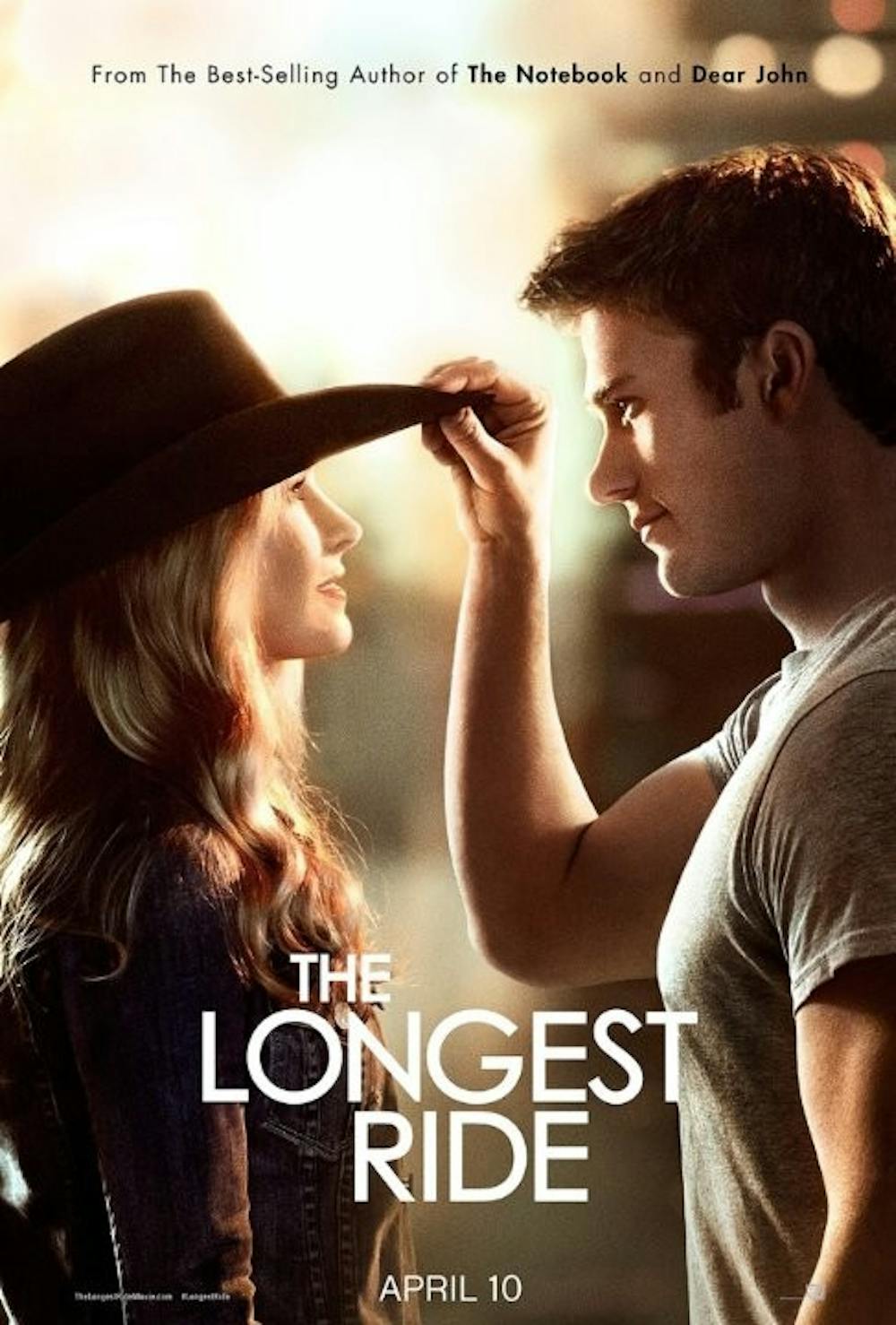Middle-aged moms and teenage girls alike are flocking to the theaters this weekend as another hyped up Nicholas Sparks movie takes to the screen.
“The Longest Ride,” had everything you would expect to see in a movie from the mind of Sparks. A hot guy, a pretty girl and a conflict that will ultimately get resolved in a seamless, predictable fashion. Compared to the book on which it is based, however, this particular film fell short.
Scott Eastwood (yes, that's Clint Eastwood’s son) plays the attractive male lead, a professional bull rider, alongside the beautiful Britt Robertson, a fine arts major at the local college. Their two opposite worlds collide when they meet at one of Eastwood's competitions, only to have the cliché “how we will fit into one another’s world?” complications arise.
Their on-screen issues weren’t the only problems these two young actors faced. When you’re acting in a movie that originated as a book, the main feat is living up to the expectations readers developed in their minds. When I visualized a rough around the edges, professional bull rider, it was nothing like Eastwood.
Eastwood played the role of bull rider Luke with very little believable emotion. It seems as if he was hired on his looks alone, which isn't be hard to believe. However, the fact that he didn’t seem sincere largely took away from the film, especially with all of the adorable dates and gestures he has to perform.
The differences between the movie and the book didn’t help Eastwood’s case either. They took a character that seemed realistically rough around the edges and made him slightly unrealistic by adding more romantic gestures than the book included.
For example, on the couple's first date, the book describes a cowboy picking up a college student at her sorority house, before taking her on a typical date at a sushi restaurant. The movie, however, shows a cowboy bringing her flowers to her door, before taking her to a lake with a pre-prepared picnic under the glistening stars— big difference.
Robertson, however, played the part of Sophia well, looking passionate in the right moments and weary of love in the right instances. Overall she captured the character's personality and love of art well.
Sparks is notorious for his love stories, and he brought out the big guns this time by weaving two separate love stories into one. In addition to the cowboy and art major love story, the movie follows the path of a World War II veteran and a holocaust refugee, who fall deeply in love in the same state as Sophia and Luke.
This story line was far more interesting, and it blew Eastwood and Robertson’s level of emotion out of the water. The couple had real, heart wrenching problems, such as being separated by war man away at war and their inability to have children due to infertility from a war injury.
The only time I shed a tear was shed during this film was when there were flashbacks to this alternate story line, and Jack Huston and Oona Chaplin could take to the screen toplay Ira and Ruth. I found myself waiting for this couple to reappear on screen, rather than focusing on the complications of Luke and Sophia. This story line was more engaging because their acting skills were beyond anything I expected from a film of this type.
Overall, the film captured the essence of the novel well, even improving the story line with one major change. The two couples were more closely interwoven, which helped the ending make far more sense.
“The Longest Ride” was worth seeing, despite the over-romanticized movie storyline and Eastwood’s less than believable portrayal. Still, it is hard to believe audiences will be anything but satisfied when they leave the theater.
Did you see "The Longest Ride" yet? Tell the reporter your opinion at dpharias@asu.edu or follow @dpharias on Twitter.
Like The State Press on Facebook and follow @statepress on Twitter.




